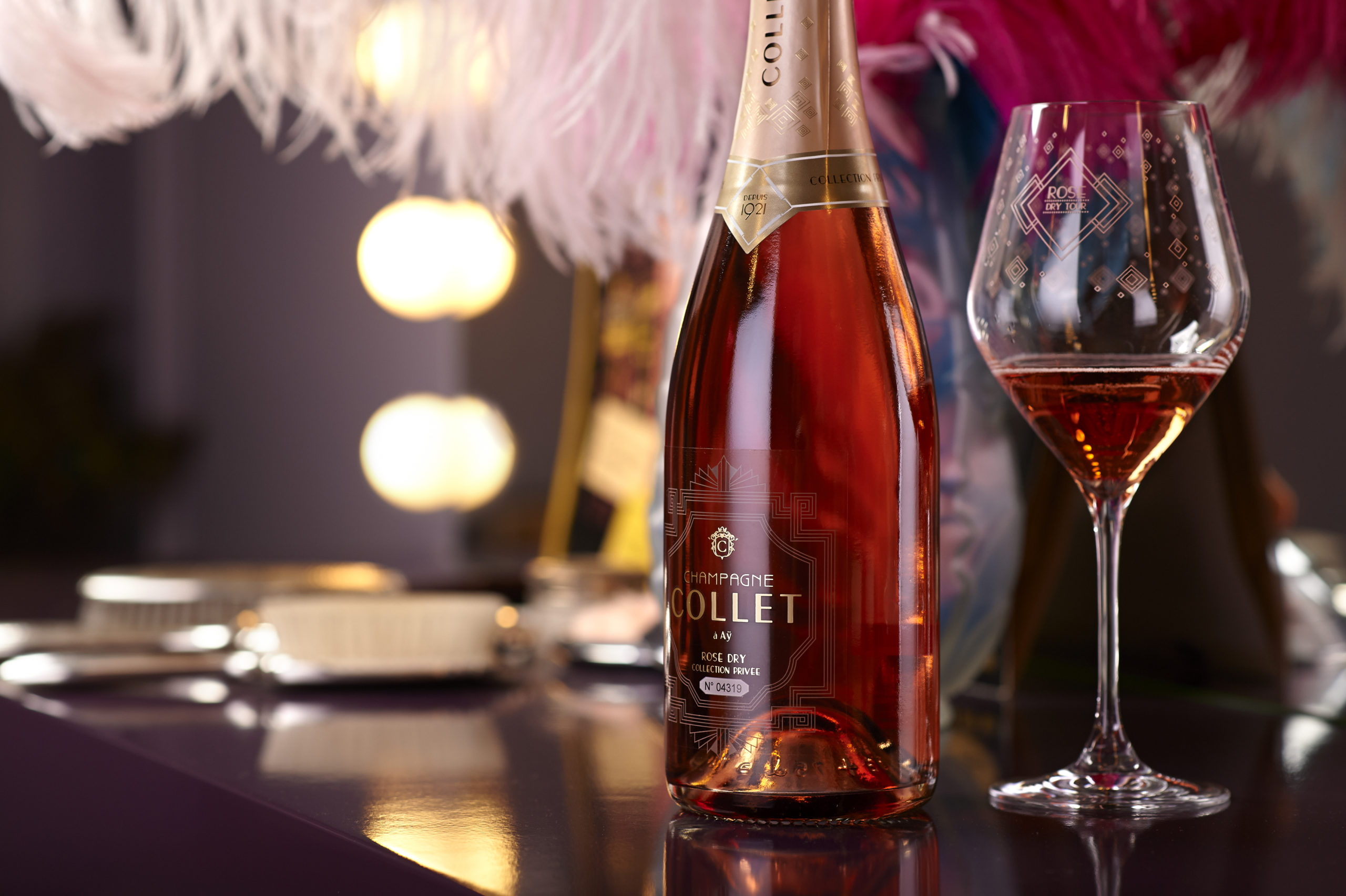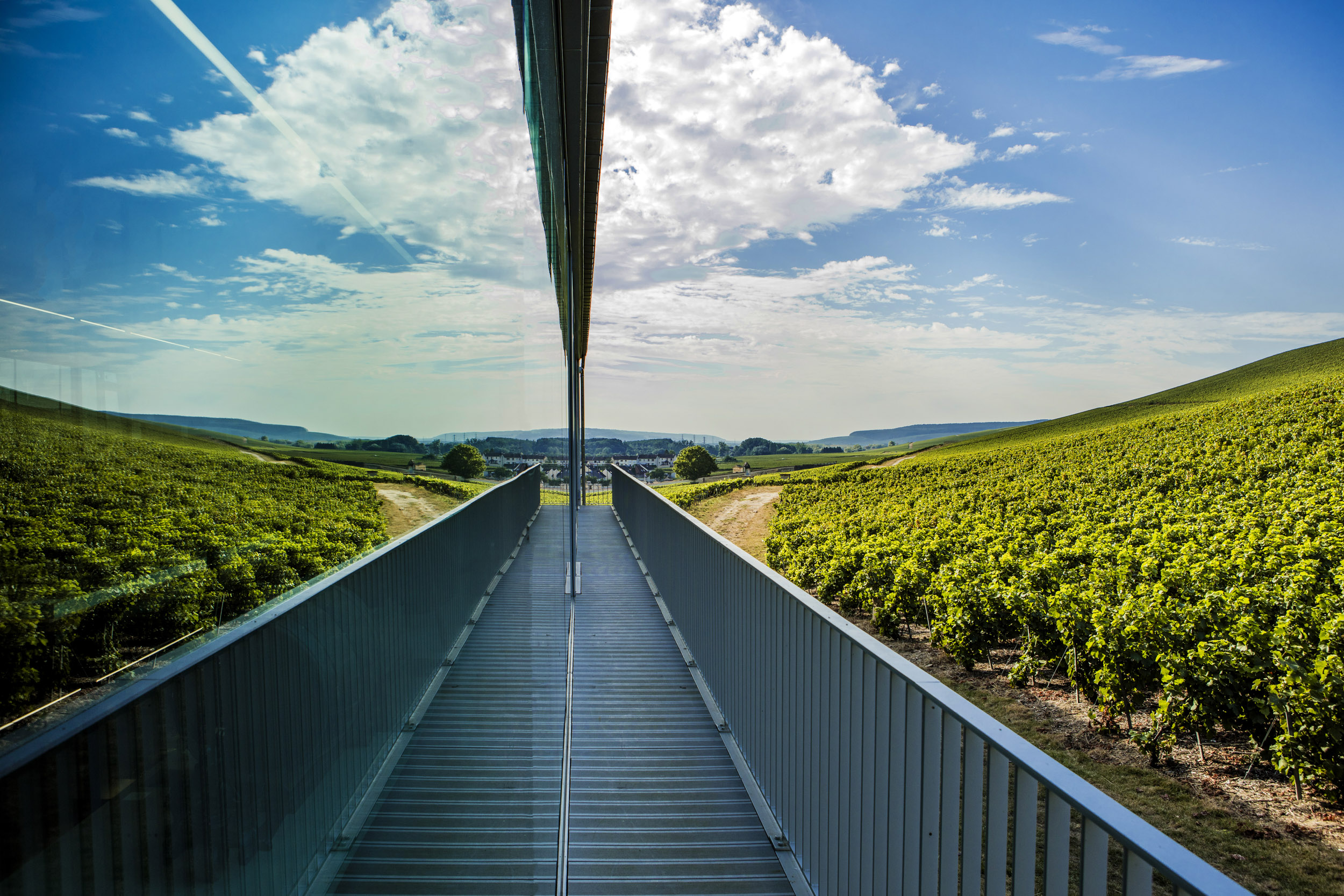
“I only drink Champagne on two occasions, when I am in love and when I am not.” —Coco Chanel
In love or not, let’s celebrate Valentine’s with Champagne!
How much do we know of this complex, effervescent drink? That on the nose and on the palate it has flavors and aromas that range from flowers, fresh fruits, cinnamon, spice and dough? That over time these develop hints of honey, dried fruit, figs, nuts, toast, brioche?
Our hosts at the Champagne Collet in Champagne, France, David Rieu and Maxime Pinon schooled us on how Champagne is made, from vine to wine, and how it’s best enjoyed.• Champagne can only be “Champagne” if it is exclusively produced from grapes grown, harvested and made into wine within the Champagne region, in France. These grapes are like no other due to the geography, soil and climate of the region.
• The three Champagne grapes are Chardonnay, Meunier and Pinot Noir.
• Champagne must be in the cellars for at least 15 months for nonvintage wines. Vintage Champagne should be kept for at least three years; more for the Special Cuvée (batch). Allowing it to mature makes the Champagne richer and intensely flavorful.
• A cru is a specific location with an environment that is unique to itself wherein one particular variety of grape thrives.
• Champagne is represented by 320 crus and 275,000 individual vineyards, each of with a distinct character and individual profile.
Best Champagne
These are the types of Champagne: Blanc de blancs which is blended exclusively from white grapes; Blanc de noirs, blended from Pinot Noir and/or Meunier; nonvintage, traditionally blended from grapes from various vintages, and also wines from different grape varietals and crus; vintage Champagne, blended from wines of a single millésime (a single outstanding year, as chosen and declared vintage by the Champagne producers); Rosé Champagne, created by macerating whole, black grapes or a blend of black and white grapes.
The best Champagne is the Champagne you like!
When it comes to Champagne, there is effervescence and there is mousse. Mousse is formed once the Champagne is poured, and touches the base of the glass. The quick, copious free flow of liquid, that swish when it is initially served, is the mousse. The effervescence, on the other hand, are the new bubbles that appear once the liquid has settled.
We were taught that the effervescence in Champagne should consist of dainty, delicate, fine bubbles that float to the surface. These bubbles should neither be too frothy, heavy nor dense. Each glass of Champagne has about 2 million bubbles.

How to serve
For the perfect glass of Champagne, choose tall, tulip-shaped glasses over Champagne saucers. The shallow saucers can neither hold the effervescence or develop aroma. Though, for vintage, cru or more premium Champagnes, a white wine glass with a big body is becoming more in vogue because of the complexity that can be detected with a bigger bowl and wider rim on good Champagnes.
Glasses should be rinsed with hot water and drained upside down until thoroughly dry. This will rid the glass of residue, that may cause the bubbly to go flat.
You can chill Champagne two ways: four hours in the bottom portion of the refrigerator; or submerge it in a bucket full of ice for half an hour—in these parts, around 45 minutes at least. Never put Champagne bottles in the freezer and never, ever serve it in chilled glasses.
When bottles were being opened for us at Champagne Collet, not once did I hear a pop, and many bottles were opened! We were told repeatedly to tilt the bottle slightly, always remembering to point it away from you and those around you. The metal loop is then unraveled, the wire cage and the foil removed. While holding the cork firmly, slowly and gently twist the bottle and never the cork. This way the cork gently twists itself off the bottle instead of popping out. The popping sound made when opening Champagnes may be considered rude and somewhat brash.
For Valentine’s, Collet recommends: Champagne Collet Brut Rosé aged for a minimum of four years. It’s excellent for aperitif and pairs wonderfully with lobsters. The Rosé Dry Collection Privée is rich, pairs well with berries and other fruit-based desserts.
GCRM Philippines, tel. 0917-8722068
Join me in October in Alsace, Champagne and Paris for Kitchens of the World France. Kitchens of the World are my one-of-a-kind Culinary Tours, carefully curated for those who wish to savor the world through food. Fritzie of Rajah Travel, tel. 0917-5629370; 0920-9REGGIE or visit www.reggieaspiras.com, @iamreggieaspiras










































